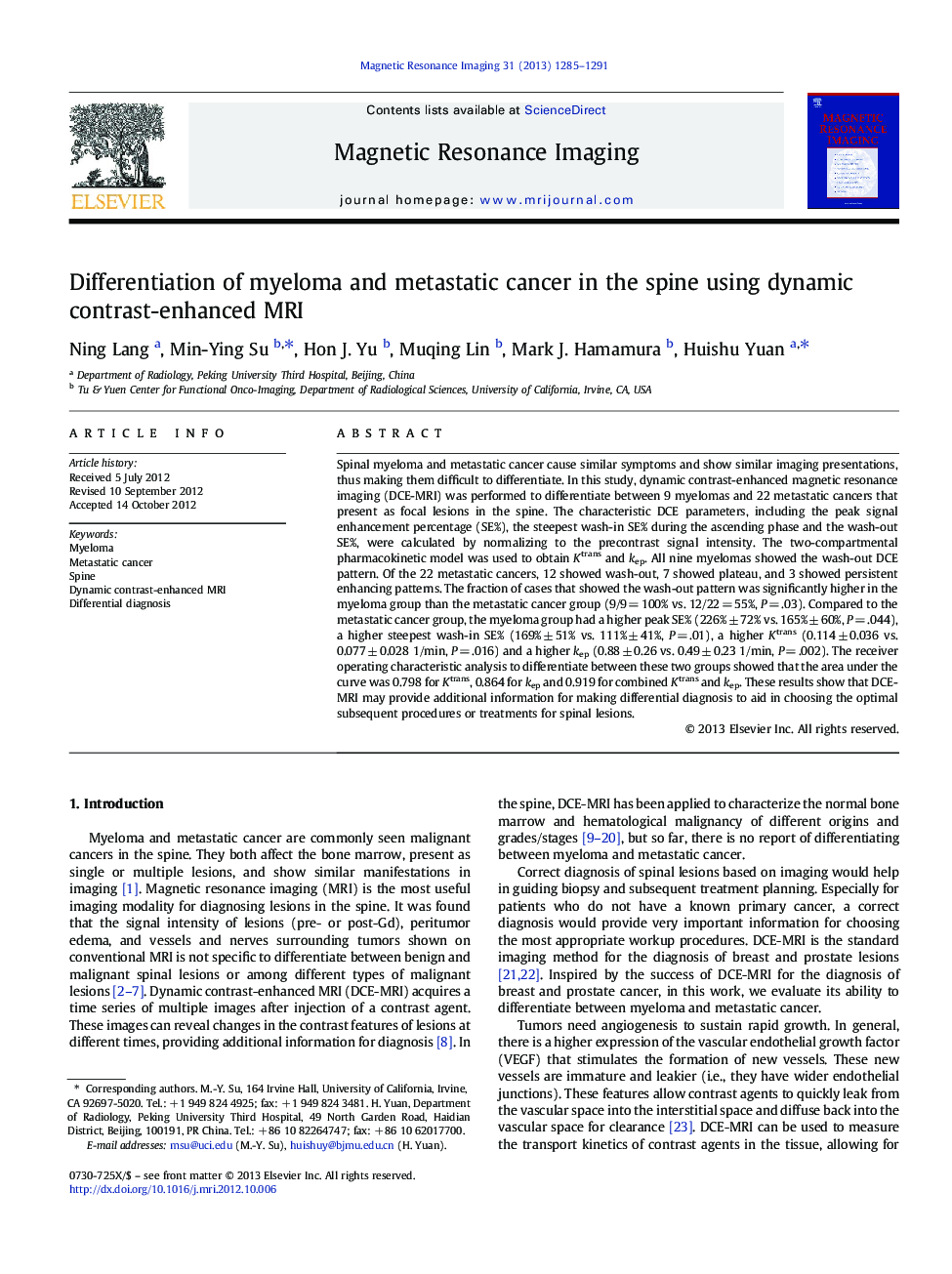| Article ID | Journal | Published Year | Pages | File Type |
|---|---|---|---|---|
| 1806365 | Magnetic Resonance Imaging | 2013 | 7 Pages |
Spinal myeloma and metastatic cancer cause similar symptoms and show similar imaging presentations, thus making them difficult to differentiate. In this study, dynamic contrast-enhanced magnetic resonance imaging (DCE-MRI) was performed to differentiate between 9 myelomas and 22 metastatic cancers that present as focal lesions in the spine. The characteristic DCE parameters, including the peak signal enhancement percentage (SE%), the steepest wash-in SE% during the ascending phase and the wash-out SE%, were calculated by normalizing to the precontrast signal intensity. The two-compartmental pharmacokinetic model was used to obtain Ktrans and kep. All nine myelomas showed the wash-out DCE pattern. Of the 22 metastatic cancers, 12 showed wash-out, 7 showed plateau, and 3 showed persistent enhancing patterns. The fraction of cases that showed the wash-out pattern was significantly higher in the myeloma group than the metastatic cancer group (9/9 = 100% vs. 12/22 = 55%, P = .03). Compared to the metastatic cancer group, the myeloma group had a higher peak SE% (226% ± 72% vs. 165% ± 60%, P = .044), a higher steepest wash-in SE% (169% ± 51% vs. 111% ± 41%, P = .01), a higher Ktrans (0.114 ± 0.036 vs. 0.077 ± 0.028 1/min, P = .016) and a higher kep (0.88 ± 0.26 vs. 0.49 ± 0.23 1/min, P = .002). The receiver operating characteristic analysis to differentiate between these two groups showed that the area under the curve was 0.798 for Ktrans, 0.864 for kep and 0.919 for combined Ktrans and kep. These results show that DCE-MRI may provide additional information for making differential diagnosis to aid in choosing the optimal subsequent procedures or treatments for spinal lesions.
